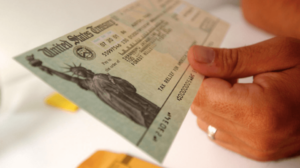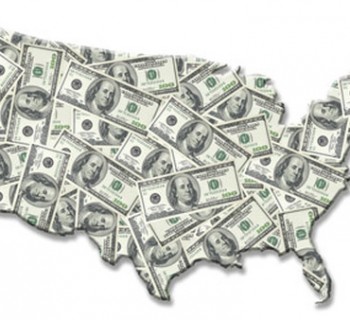 If you are expecting a tax refund this year, you are not alone. According to the IRS, 155 million tax returns are expected to be filed in 2018 with 70 percent of taxpayers receiving a refund. Last year, nearly 112 million refunds were issued at an average amount of $2,895. For many taxpayers, tax refunds are larger, highlighting the importance of making good choices when determining how best to allocate these funds. Before spending your refund on something frivolous, why not consider applying your check in a way that can improve your financial position for years to come.
If you are expecting a tax refund this year, you are not alone. According to the IRS, 155 million tax returns are expected to be filed in 2018 with 70 percent of taxpayers receiving a refund. Last year, nearly 112 million refunds were issued at an average amount of $2,895. For many taxpayers, tax refunds are larger, highlighting the importance of making good choices when determining how best to allocate these funds. Before spending your refund on something frivolous, why not consider applying your check in a way that can improve your financial position for years to come.
#1 - Invest in yourself
Improving your skills, education and marketability is often an effective way of boosting your earnings potential over time. According to Dr. Robert McCaig, Vice President of Enrollment Management at Monmouth University in Long Branch, NJ, “Over the last 40 years, bachelor’s degree holders have earned on average 56 percent more per year than those with a high school degree alone. In fact, since 2001, the difference in average earned income has increased to over 75% more per year, highlighting both the importance and benefits of higher education.” As you might imagine, the correlation between education and earning potential can be seen at higher education levels too. McCaig continues, “On average, master’s degree graduates earn 26 percent more than those with a bachelor’s degree and demand is increasing. The Bureau of Labor Statistics suggests that the number of jobs requiring a master’s degree is expected to increase by 18 percent between now and 2022.”
Why not consider using a portion of your tax return to invest in yourself by working toward certifications and degrees at your local college, university or technical school? Consider speaking to a career development office or someone in your related field to ensure that there is demand for the skills you want to acquire and develop. Bottom line - Increasing your earnings potential can be one of the most powerful ways to improve your financial life.
#2 - Build a rainy-day fund
Unfortunately, the majority of Americans lack sufficient cash reserves for emergencies. In fact, according to a www.Gobankingrates.com poll from last year, nearly 57 percent of survey respondents reported that they had less than $1,000 in cash reserves. (Only 25% reported having at least $10,000 in reserves.) Unfortunately, many people find that unexpected expenses get in the way of building a sizable savings account. Earmarking a portion of your tax return toward boosting an emergency cash reserve can be an effective way to protect against incurring debt. From an unexpected health expense to the loss of a job, maintaining at least 6 months of expenses for unforeseen bills may help provide the peace of mind of knowing you are financially prepared for the financial uncertainties life may throw your way.
#3 - Eliminate high-interest debts
Interest rates are on the rise and may continue for some time. (The Federal Reserve just increased rates again and is on record saying that they anticipate raising interest rates 2-3 more times this year). Remember, Fed rate hikes trickle through the credit markets and generally result in higher interest rates on everything from auto loans to credit cards. In fact, according to the www.Creditcards.com Weekly Credit Card Rate Report, the national average rate for a variable credit card has risen to 16.41 percent this month.
Paying down excessively high debt with a portion of your tax return can help accelerate the elimination of debt. Doing so may also reduce significant finance charges that can accrue over time. Consider paying down your debt with the highest interest rates first while continuing to make minimum payments on any lower interest debt you might have.
#4 - Increase tax-deferred retirement savings
Earmarking your tax refund toward your retirement goal is one of the few strategies that may allow you to use this year's tax return to potentially increase next year's return too. From an employer provided 401(k) plan to an IRA, consider increasing your retirement savings toward maximum contribution thresholds. For 2018, taxpayers can save $5,500 in a traditional or Roth IRA ($6,500 if over age 50). Since IRA contributions alone may not be sufficient, be sure to take advantage of a 401(k) plan where available as it allows up to $18,500 ($24,500 if over age 50) in tax advantaged savings. Consult with your financial or tax adviser to determine whether a Roth or Traditional plan makes financial sense for you.
Adjust your withholdings
Prior to examining the options for investing your tax refund, consider reviewing whether your withholdings are ideal for your situation. A tax refund is exactly what it sounds like – a refund of excess taxes that were withheld and is the equivalent of an interest-free loan to the IRS. For taxpayers that lack the discipline to save, a large refund might seem beneficial. However, taxpayers may benefit from adjusting withholdings as it may free up cash flow that can used on a monthly basis toward other goals and expenses. Use caution - withholding too little can actually result in owing the IRS. (Unfortunately, they do not lend money interest free.) Since tax reform may have shifted your tax liability up or down, consider speaking to your financial and tax adviser to determine your optimal withholding amounts and the most ideal strategies for you.
Kurt J. Rossi, MBA, CFP®, CRPC®, AIF® is a CERTIFIED FINANCIAL PLANNERtm Practitioner & Wealth Advisor. He can be reached for questions at 732-280-7550, kurt.rossi@Independentwm.com, www.bringyourfinancestolife.com & www.Independentwm.com. LPL Financial Member FINRA/SIPC.








